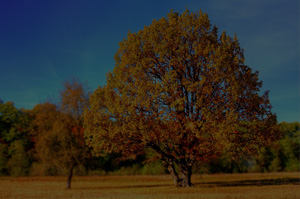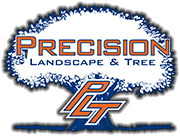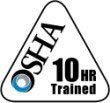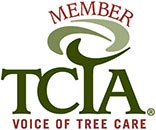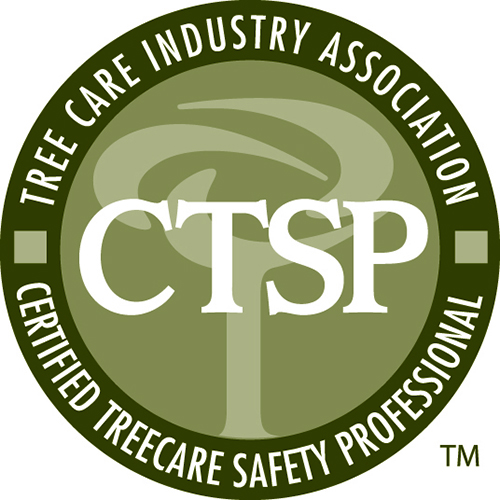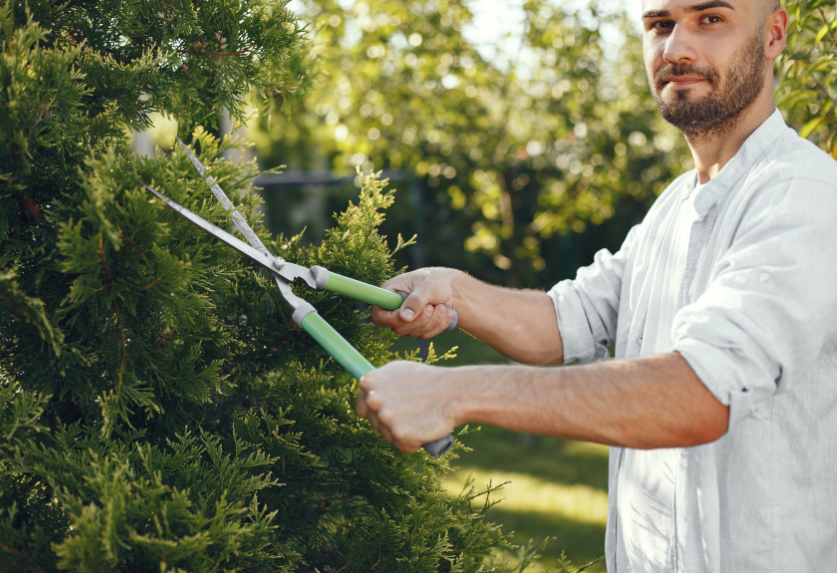 Pruning a tree is one of the best things you can do for it. It’s an important and essential step in maintaining your trees’ health.
Pruning a tree is one of the best things you can do for it. It’s an important and essential step in maintaining your trees’ health.
Large pruning jobs are dangerous and should be left to a professional, but smaller pruning jobs are manageable for many homeowners. As long as you don’t have to climb a ladder to reach the branches, you can learn how to prune your small trees and hedges.
Trees require consistent pruning for proper health. Though pruning does strengthen trees, trees that aren’t properly pruned are weakened and therefore hazardous.
Improper pruning can kill a tree. The trick is knowing when and where to prune. Every cut should be intentional.
Why to prune
Not only does pruning keep your landscape looking clean and tidy, but it also benefits the tree. If done properly, pruning does not hurt the tree, it’s actually quite beneficial.
Prune to promote plant health. The purpose of pruning a tree is to protect the tree from developing unwanted diseases and increase its growth potential. Dead, broken or diseased branches must be removed to prevent infectious insects from invading the tree.
Prune to protect people and property. Pruning will remove hazardous branches that interfere with street lights and power lines or overhang homes, sidewalks, play areas and any place where falling limbs could injure people or damage property.
Related Article: Why Tree Pruning is Important for Trees and Humans
When to prune
Generally, it’s best to prune after the coldest part of the winter has passed. In Minnesota, this falls during late winter or early spring. Trees are dormant at this time and pruning during dormancy helps to promote new growth and ward off pests and diseases. Pruning in late winter, just before spring growth starts, leaves fresh wounds exposed for only a short length of time before new growth begins the wound sealing process.
However, you can still remove dead or dying branches at any time of the year, as long as it isn’t super rainy or humid outside. Waiting until fall or winter to prune these branches could cause further tree damage or infection.
The only season you should absolutely avoid pruning is during the fall. In the fall your tree won’t heal at a normal speed and there are decaying fungi spreading spores.
Any other pruning during the summer is generally not recommended, except with newly planted trees.
What to prune
- Dead or dying branches. Cut them back to another healthy branch, or back to the main trunk. Once you have removed the dead branches, it’s easier to see what you’re working with and what needs to be pruned next.
- Damaged branches. Whether they were damaged by a storm or another event, broken branches should be pruned, even if they’re still alive, so that the water and nutrients they're consuming get redistributed to healthy branches.
- Rubbing branches. Remove branches that cross or are growing too close to each other to let in the air, light and rain necessary for the leaves on the inside and the lower portions of the plant to grow properly. In order for trees to grow healthy, they need good air circulation through and around the branches. Branches that are close together foster the growth of fungus and attract more insects. If untreated, a large portion of the tree can be lost.
How to prune a tree on your own
First, identify the tree’s main branches. These branches shouldn’t be pruned.
Once you decide which limb to remove, the first thing to do is locate the branch collar. This is the area where the branch is coming out of the tree. It’s easier to see on some than on others, but look for a ridge, a circle, or an area where the bark is thicker. It’s important to make the cut on the outside of the branch collar, so the wound can heal properly.
To make a cut, choose a spot just past the branch collar. You want to cut as close to the tree’s trunk as possible so as not to leave a stub but not cut into the branch collar. For a new branch less than an inch in diameter, cut downward at a 45-degree angle.
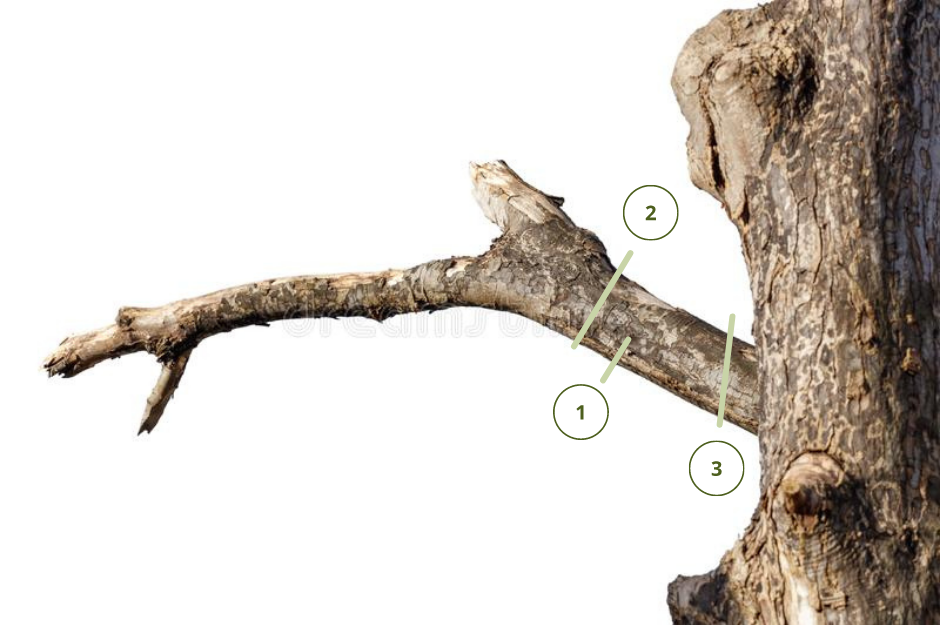 When cutting larger branches, three cuts are needed. Make the first cut on the underside of the branch, about 12 inches from the trunk, and approximately ten to fifteen inches above the branch collar (about halfway into the branch). The second cut will be where you want to cut the branch. Move about an inch out from the first cut and cut into the top side of the branch. Once the branch falls, make the last cut just past the branch collar.
When cutting larger branches, three cuts are needed. Make the first cut on the underside of the branch, about 12 inches from the trunk, and approximately ten to fifteen inches above the branch collar (about halfway into the branch). The second cut will be where you want to cut the branch. Move about an inch out from the first cut and cut into the top side of the branch. Once the branch falls, make the last cut just past the branch collar.
Each cut you make opens the tree to potential fungus and insect infestation. Prune only as much as you need to and never remove more than 25 percent of the branches.
Keep in mind that different trees require different types of pruning. Also, shrubs need to be pruned much more often than trees. Make sure to follow the correct guidelines for your specific tree or shrub.
Tools
When it comes to trimming trees, using quality tools is very important. Wounds close fastest when the cuts are smooth, so keep your tools sharp and clean. Dull tools will damage your trees and dirty blades could spread disease to the open wounds.
Along with quality tools, you must understand which tools are appropriate for the project.
When pruning small trees, the most important piece of equipment is a pair of pruning shears. Using these early in a tree’s life will greatly reduce the amount of corrective pruning that it will require as it matures. Pruning shears can make cuts up to ¾ inch in diameter and allow you to cut very close to the trunk. Position the thin blade of the shear on the trunk side to keep the resulting stub as short as possible.
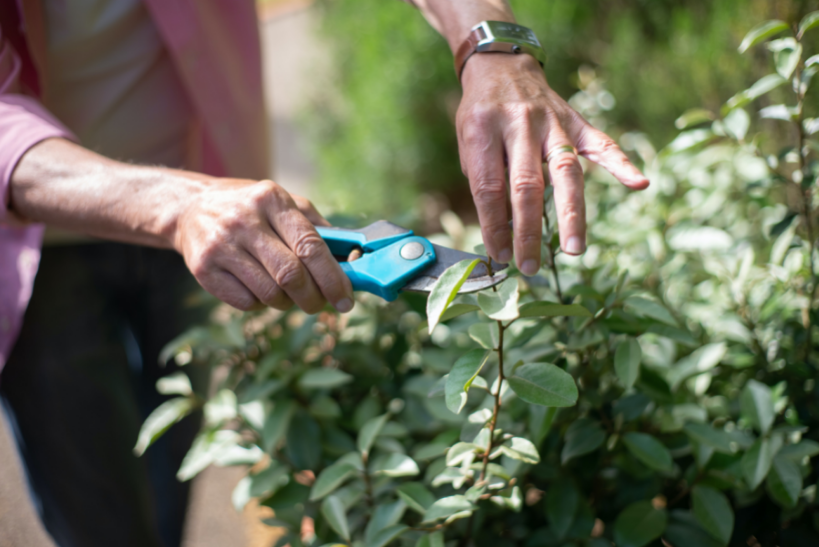
When you have to twist and strain to make a cut, you’re trying to cut too large a branch and need lopping shears. Lopping shears are similar to pruning shears, but their long handles provide greater leverage needed to cut branches up to 1.5 inches in diameter.
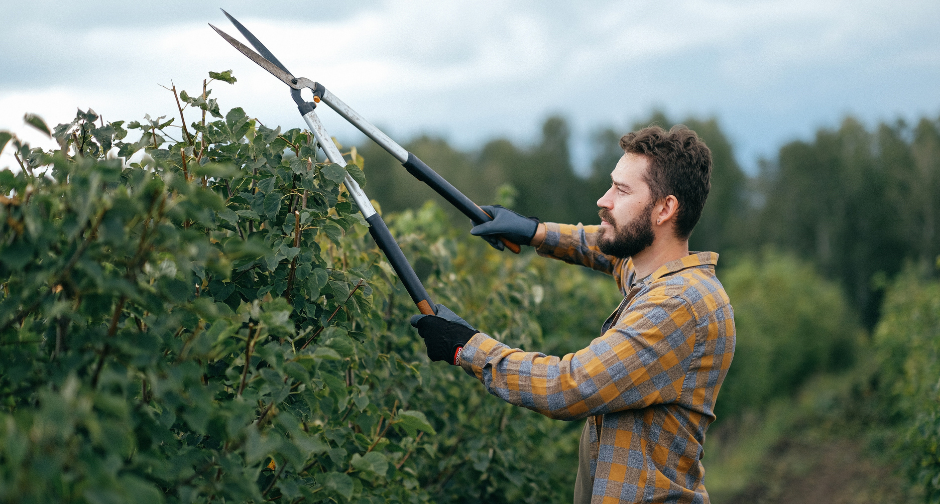
Branches that are too large for lopping shears should be handled with a pruning saw. Pruning saws are available in rigid and folding models, with straight or curved blades. For smaller branches, a curved blade is best because the saw cuts on the pull stroke. Large, straight-blade, rigid tree saws are used for larger cuts.
Be very careful when using a pruning saw on small branches because it’s difficult to make a proper cut. To avoid this, use a pole pruner. Pole pruners are available in various lengths, but 8 feet is typical. The poles can be made of aluminum or wood, and are either one-piece or collapsible. Pole saws, for hard-to-reach branches, allow for extended reach, but must be used carefully as it is difficult to achieve clean cuts.
Consider the size of your plant: use pruning shears for cuts up to ¾-inch in diameter, lopping shears for branches up to 1½ inches in diameter and hand and pole saws for branches up to 4 inches in diameter.
Pruning young trees
Lightly trimming a newly-planted tree is perfectly safe. It will encourage them to develop a strong structure. Hand shears are used to cut off small dead branches and twigs and to shape the tree’s foliage.
At planting, remove only diseased, dead or broken branches. Begin training a plant during the dormant season following planting.
Be wary and know when to hire a professional
When done correctly, pruning results in healthy and beautiful trees. Certified arborists are trained in proper tree pruning techniques.
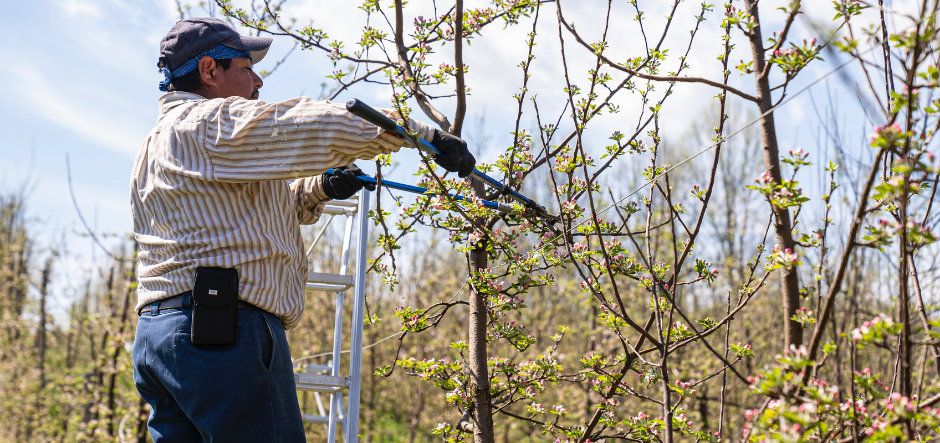
While it may seem doable, the truth is that tree pruning can be dangerous, difficult, and costly for amateurs. From the hand saws and ladders to heights and manual labor, you can see why pruning trees has a high rate of injury.
If you’re unsure what you’re doing, avoid potential accidents and contact Precision’s Certified Arborists.
